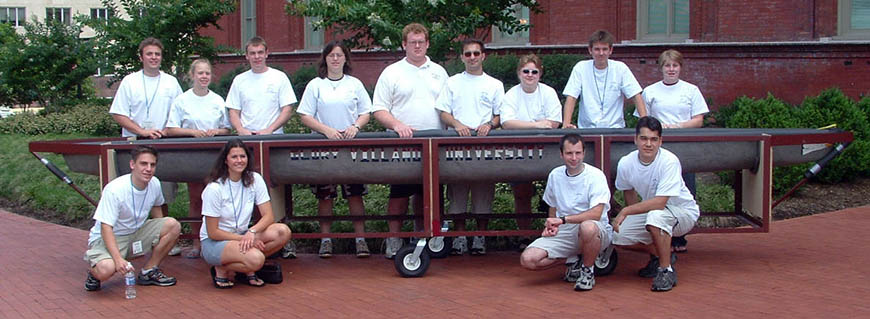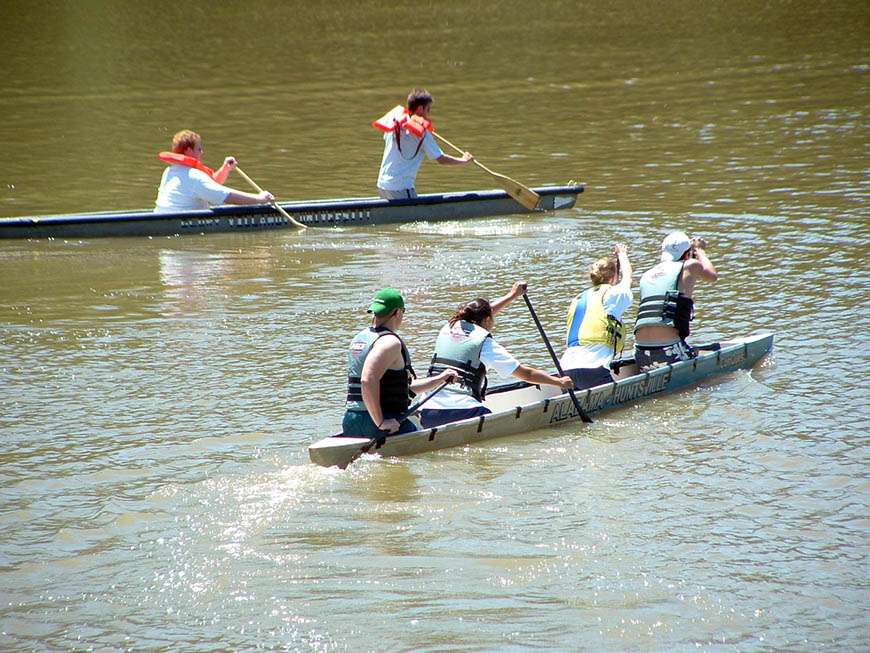Villanova Concrete Canoe is Back Afloat
by Daniel Fetsko ’19 CE
A functioning canoe made out of concrete may seem like a far-fetched idea, but the American Society of Civil Engineers (ASCE) holds annual regional and national competitions that include designing and racing concrete canoes. This year, Villanova will be seaworthy once again after a decade of non-participation. The last time the University had a concrete canoe team was in 2004; that team set the bar high, winning their regional and placing 18th at the national competition. The ASCE competition also includes Steel Bridge, which is where Megan Clarke ’16 CE, concrete canoe team project manager, got the idea of bringing the canoe back to Villanova. While at the 2015 competition as a part of the Steel Bridge team, Megan saw how many schools participated in both events and decided she wanted to make that a reality at Villanova. She says, “To sum it up, if you ask me why we are doing the concrete canoe competition, I'd tell you, because we can.”

Villanova’s 2004 Concrete Canoe Team.

The 2015-16 team looks forward to testing the seaworthiness of its vessel (photo from 2004 team).
The team, advised by Dr. Eric Musselman, assistant professor of Civil Engineering, already has around 40 students in its first semester back. From there, it is broken up into three separate design teams: hull, mix, and construction. The way the final canoe will be put together is by using a mold created by the hull design team based on their research; the hull must be the right shape and size in order to hold four people for the competition and be easy to turn during the race. At the same time, the mix design team must develop the correct concrete mix. This is the most crucial part of the process—the concrete mix must be light enough to float easily, but still be solid enough to hold together. Lastly, the construction and aesthetics design team pours the concrete and puts on all the finishing touches, including sanding, painting and building the cradle that will be used to transport the canoe. Since this is the first time any of these students have participated in the competition, it is going to be a great learning opportunity. And, despite the lack of undergraduate experience, the team does have one advantage. They have been joined by Phil Izzo, a Villanova graduate student who was the project manager that took Maryland’s concrete canoe team to the national competition last year. “Phil has and will have a big hand in helping us figure out what is required for this competition; as a group of people who haven't done this before, we’re lucky to have him,” Megan says.
At the competition this spring, which will be held at Drexel University from April 22-24, the canoe will be judged not only on buoyancy and speed, but also on the aesthetics of the design. The team must also prepare a paper and presentation on the design process. At this point, the team has not yet begun making the canoe itself, but is steadily working through the design process.
